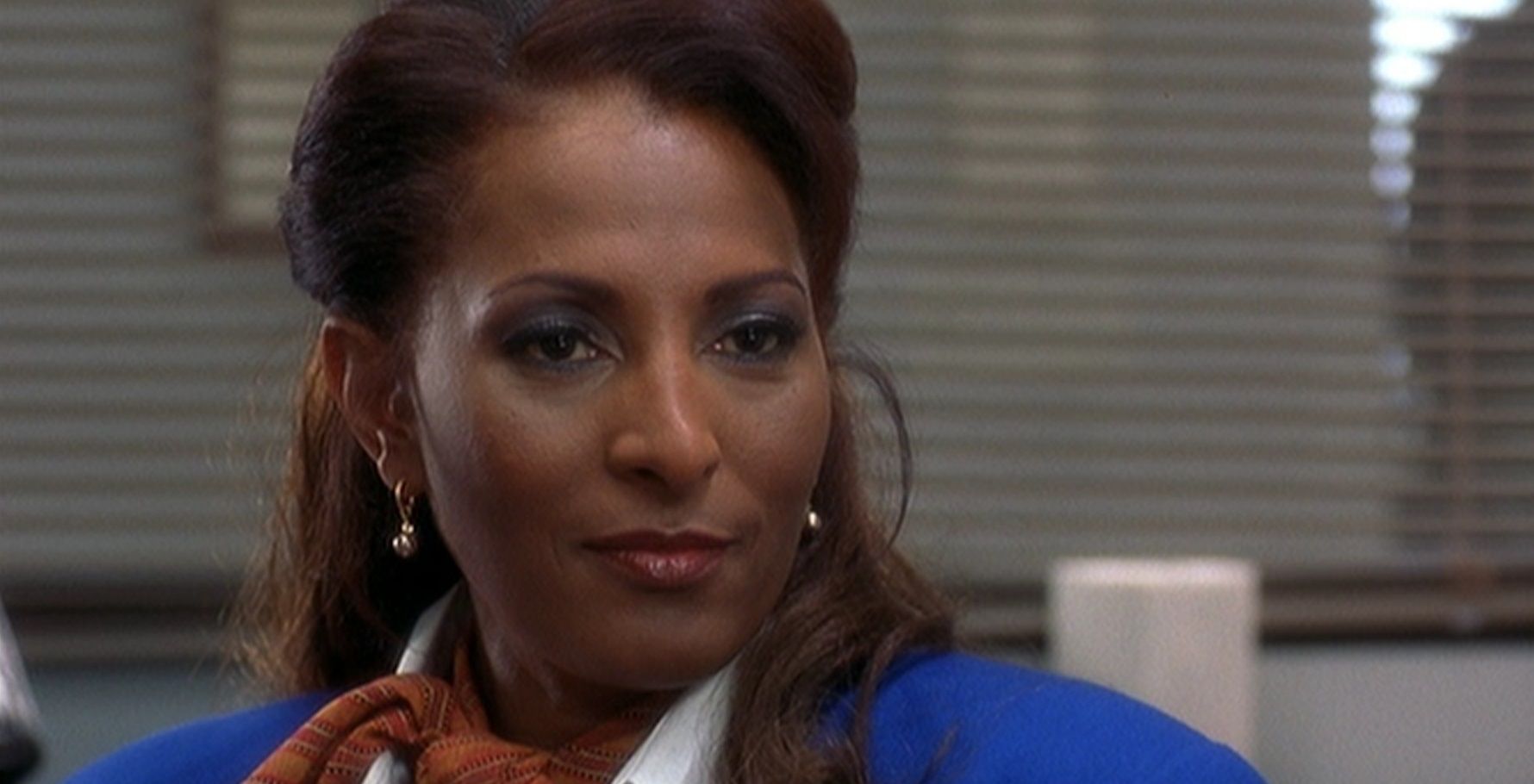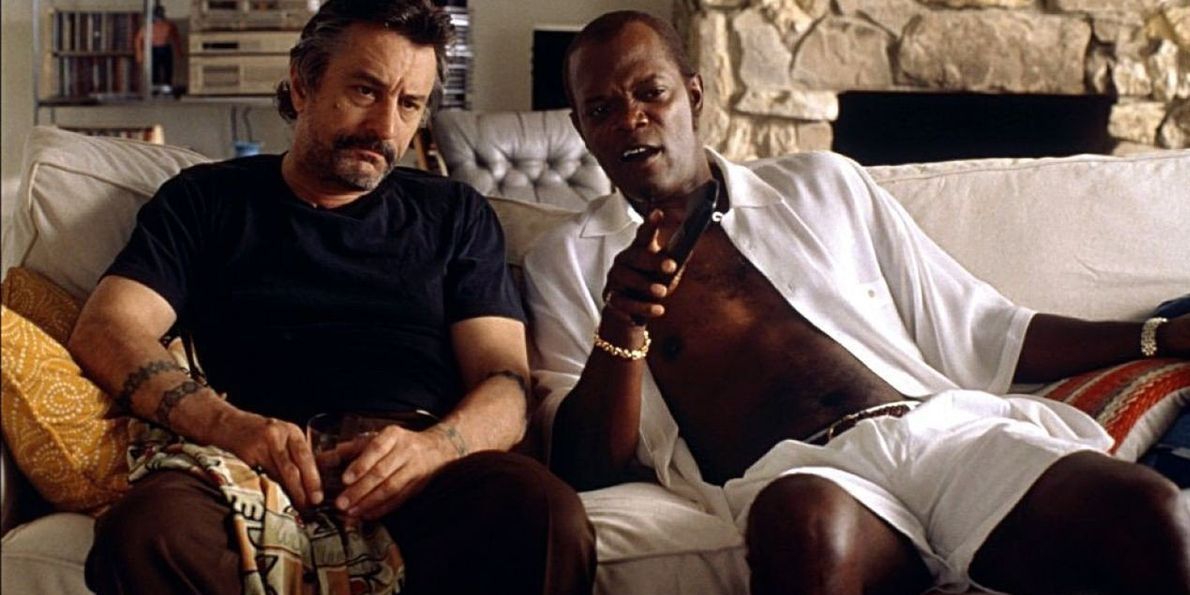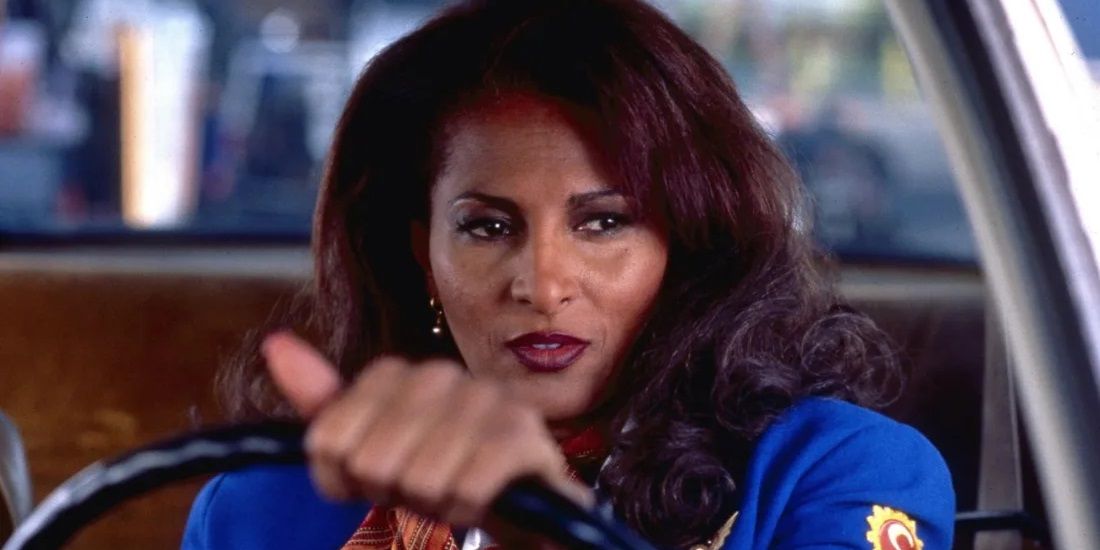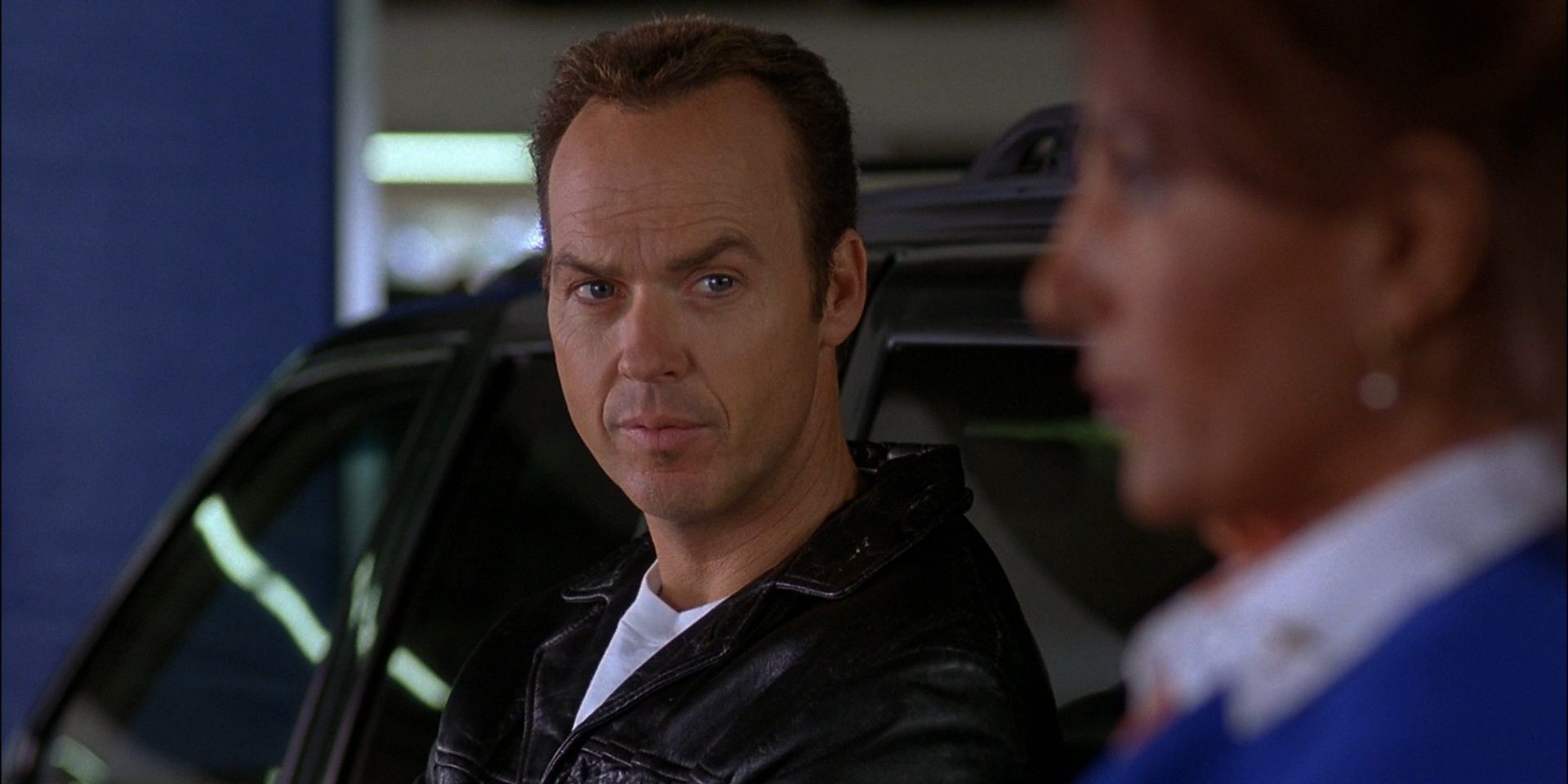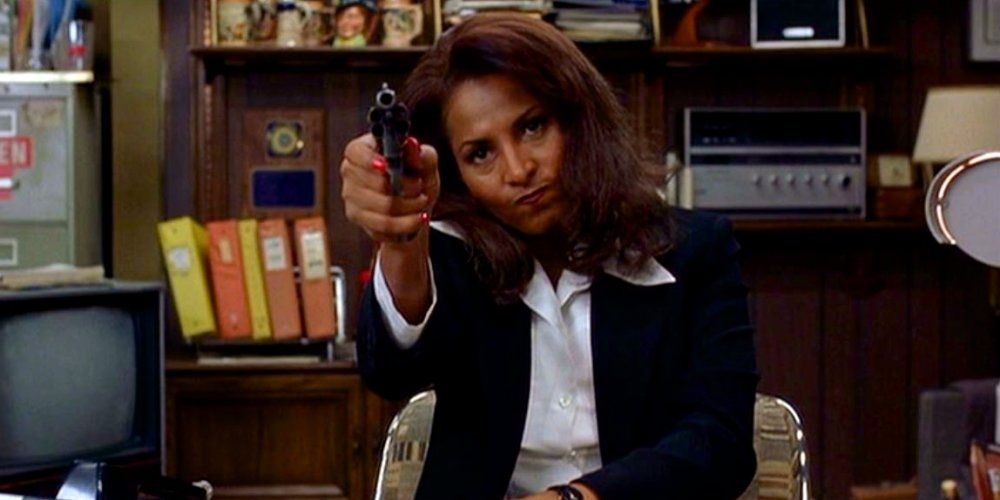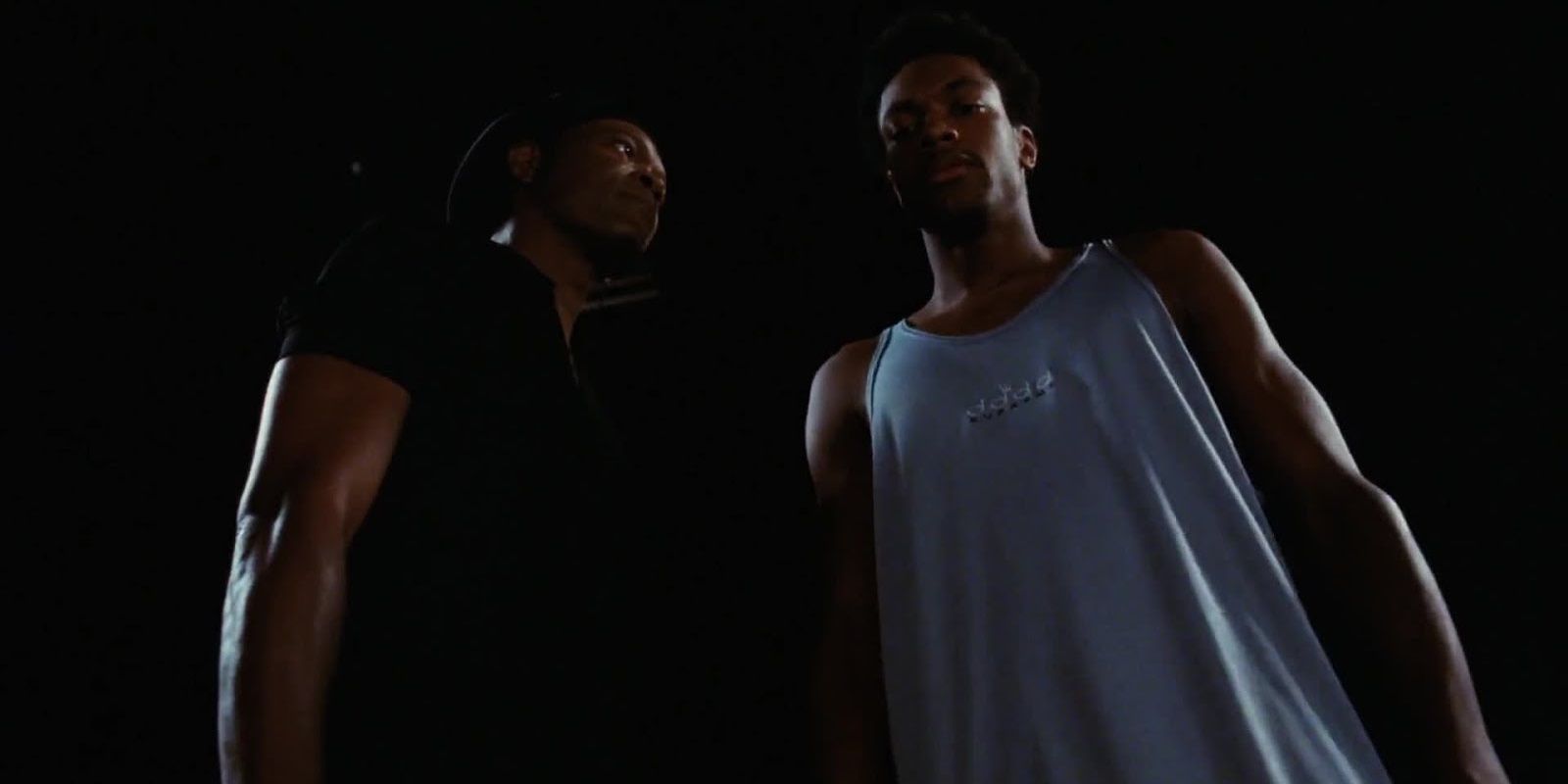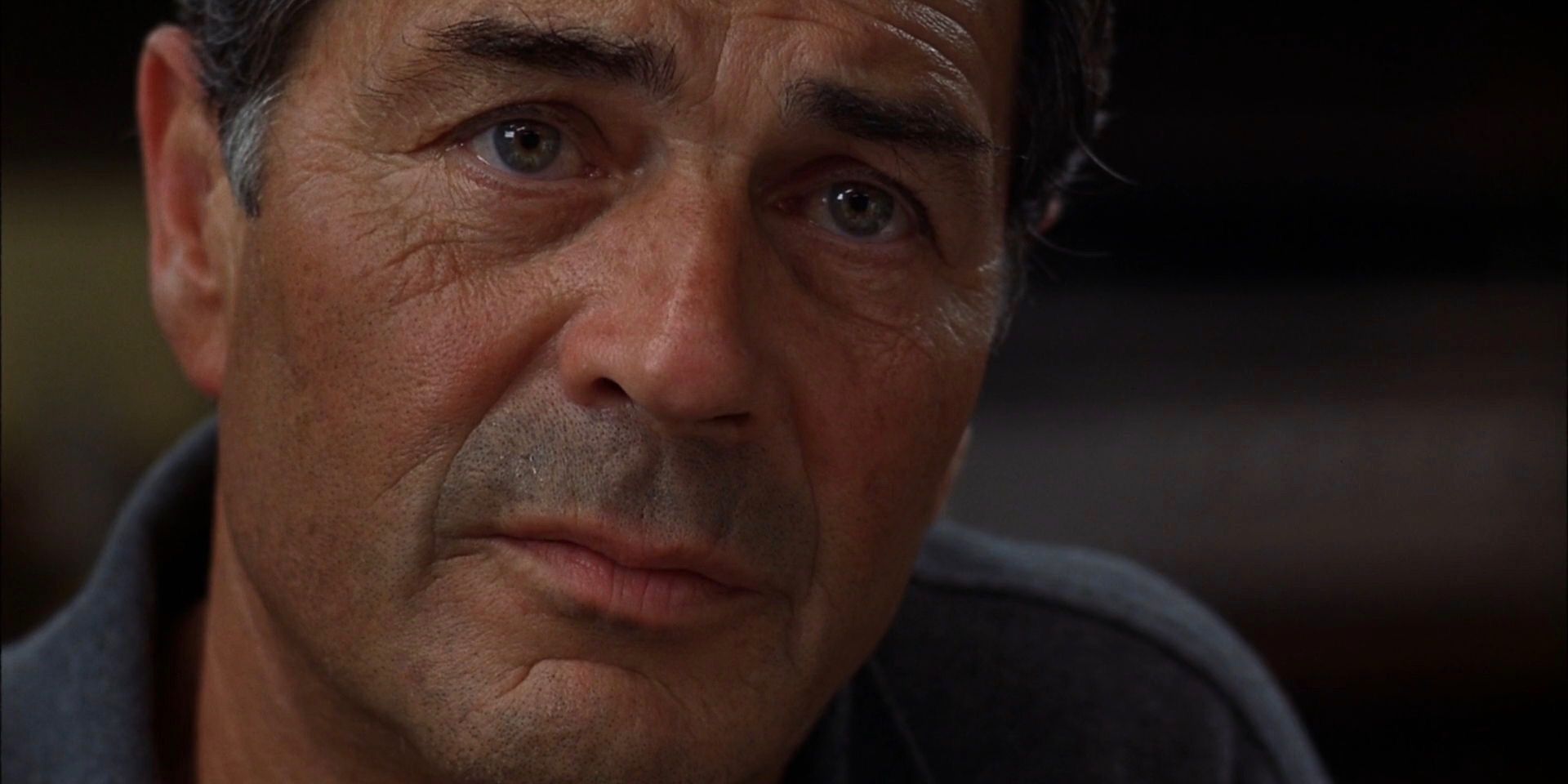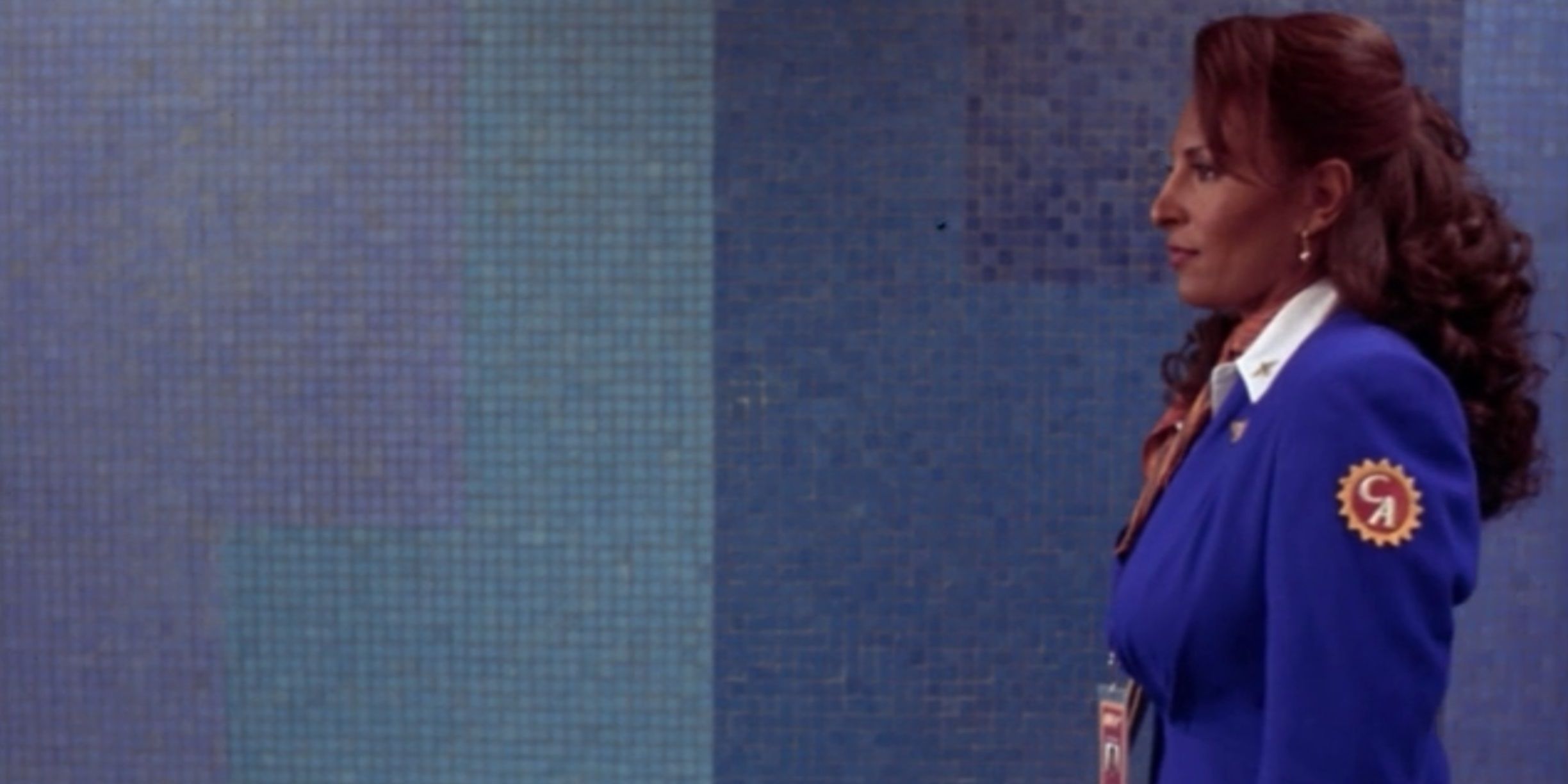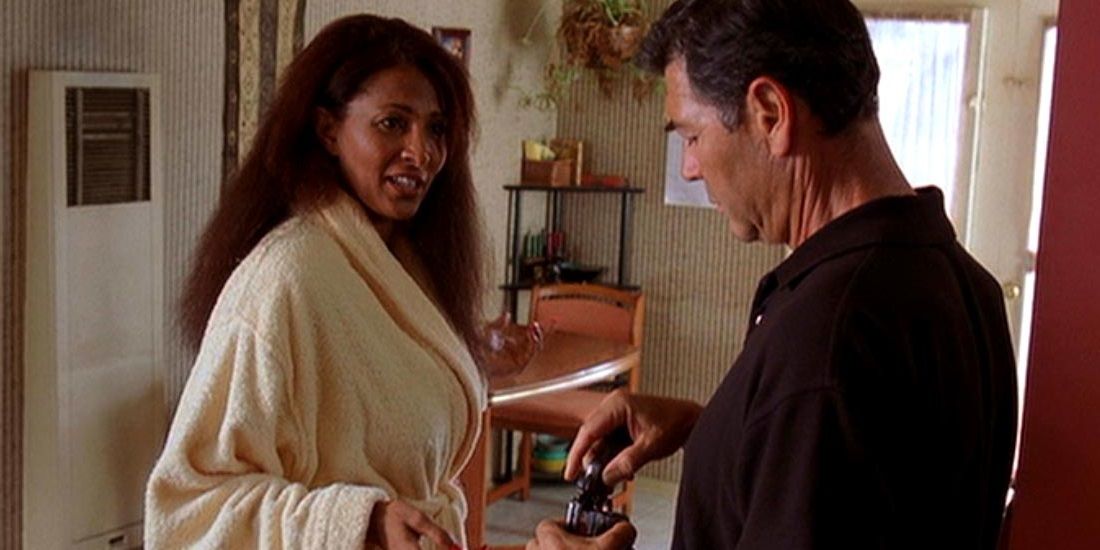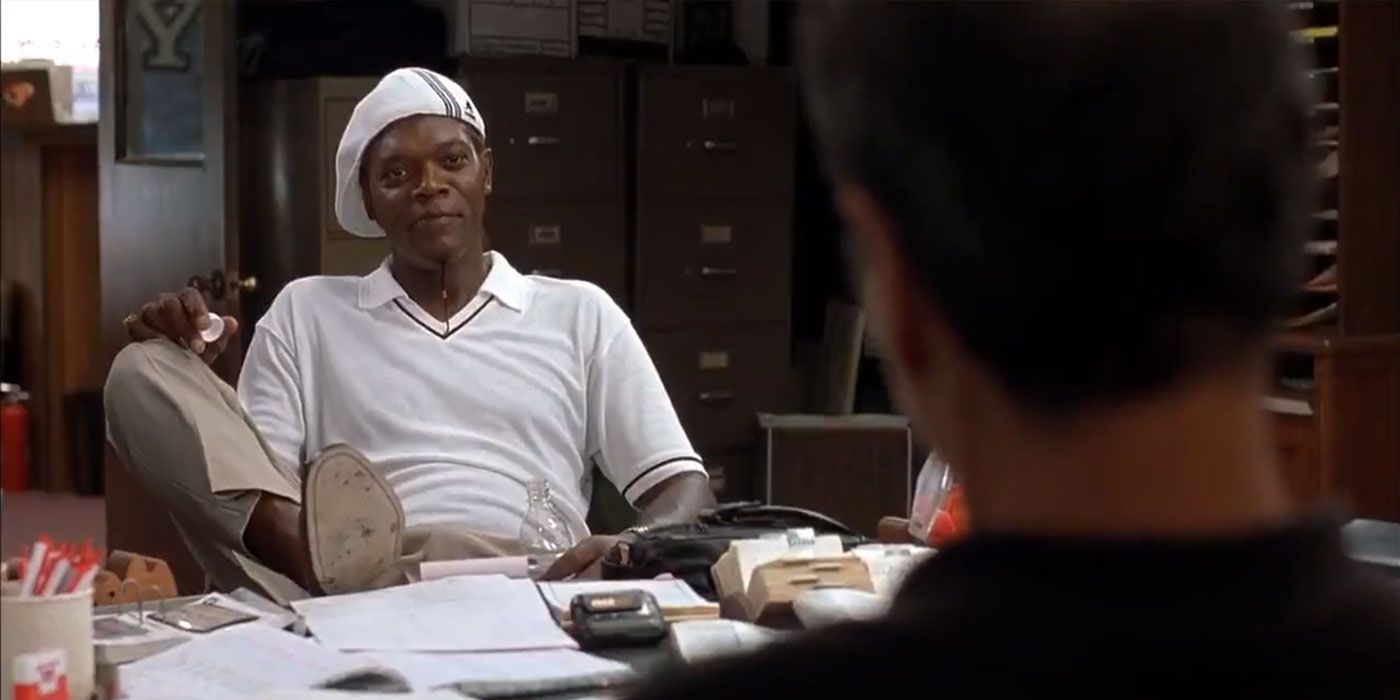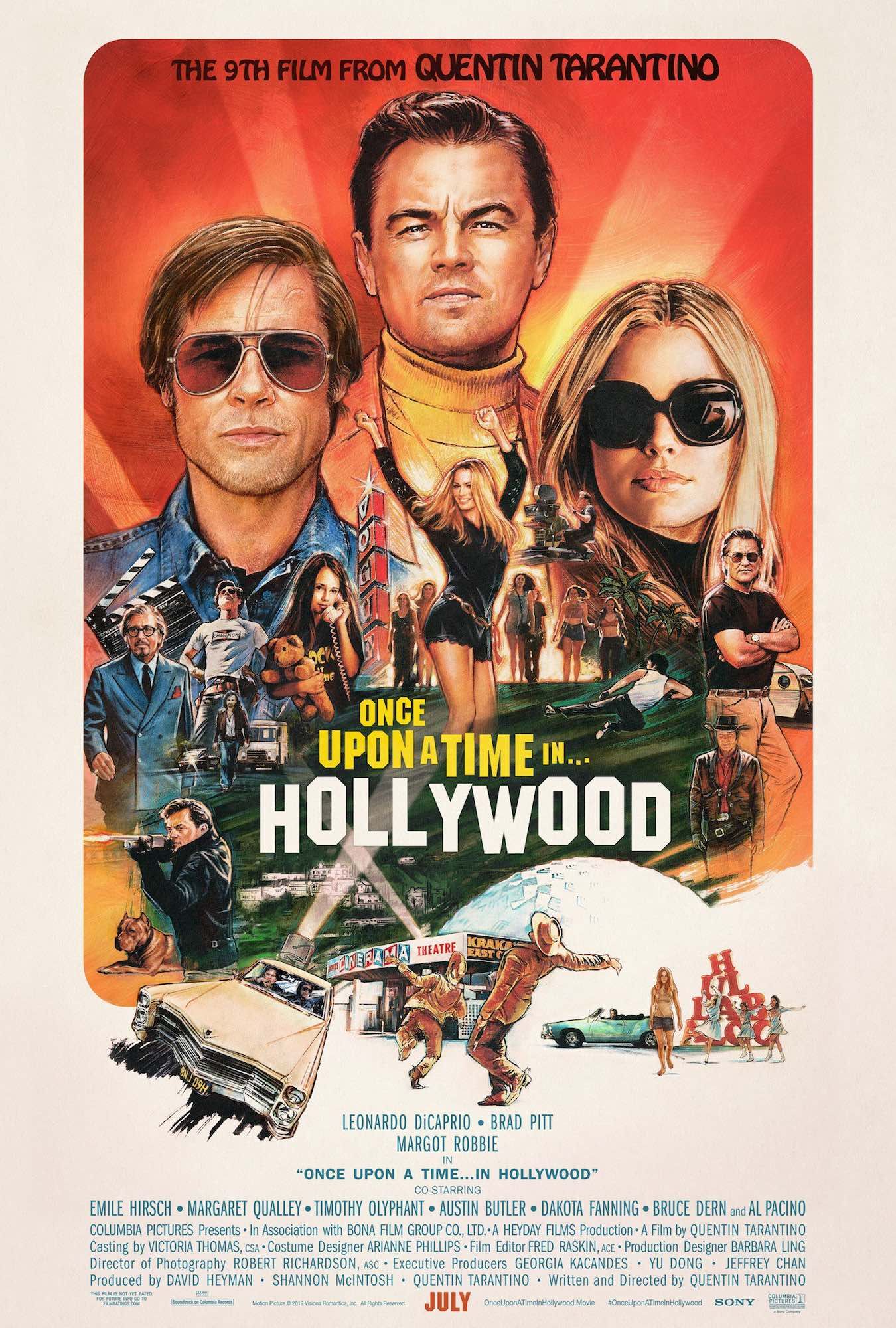Ask any Quentin Tarantino fan what their favorite movie on his filmography is, and they’re likely to say Pulp Fiction, or Django Unchained, or Kill Bill. Very few of them are likely to say Jackie Brown. In fact, outside of diehard movie buffs, not many people have even heard of Jackie Brown. But that doesn’t mean it’s a bad movie – it’s just a criminally underrated one.
To paraphrase Aldo Raine, Tarantino’s adaptation of the Elmore Leonard novel Rum Punch starring Pam Grier and Robert Forster just might be his masterpiece. Here are 10 reasons Jackie Brown is Quentin Tarantino’s underrated masterpiece.
Quentin Tarantino And Elmore Leonard Go Hand-In-Hand
Jackie Brown has the distinction of being the only Quentin Tarantino film to be drawn from source material. All of his other screenplays have been entirely original (well, technically original, but rammed with homages to existing movies), but Jackie Brown is based on the novel Rum Punch by Elmore Leonard. Leonard’s work has always been Tarantino’s strongest influence, so the two artists’ styles go hand-in-hand.
It’s great to see Tarantino tell a Leonard-inspired crime story, but it’s even better to see him tell one of Leonard’s own crime stories. Leonard reportedly declared Tarantino’s script for Jackie Brown the best screenplay he’d ever read.
Nuanced Performances
Usually, the characters in Quentin Tarantino movies feel like products of a movie world and not the real world. Their dialogue is delivered in a loud and over-the-top manner, such as rambling Biblical passages, and they have unrealistic emotions. But the characters in Jackie Brown feel more like real people.
The actors give more nuanced performances than we’re used to seeing in a Tarantino film. Robert De Niro hardly speaks a word throughout the entire movie, but through the power of his performance, we still get a well-rounded conception of his character.
Outside-The-Box Casting
Quentin Tarantino tends to cast based on type, and for his closest collaborators, in cases like Tim Roth and Michael Madsen, he created the type. But aside from Samuel L. Jackson’s character Ordell veering a little close to copying what worked about Jackson’s character in Pulp Fiction, Tarantino’s casting in Jackie Brown is against type. The movie acts as a comeback vehicle for blaxploitation legend Pam Grier, but she’s given a deeper, more emotionally complex character here than in any of her previous films.
Michael Keaton, then known as a comedy star who became Batman, was an interesting choice to play the cop on Ordell’s trail, while Robert De Niro’s sleazy crook character Louis is a far cry from the kind of gangster he usually plays.
Not A Lot Of Tarantino’s Hallmarks
What sets Jackie Brown apart from the other films of Quentin Tarantino is that it features the fewest amount of his trademarks. Tarantino’s hallmarks include nonlinear storytelling and a chapter-based narrative structure, and neither of these are on display in Jackie Brown. You can still tell that Jackie Brown is a Tarantino film, but it’s not as on-the-nose with reusing established tropes.
Instead, it utilizes new techniques, like the same sequence shown from the perspectives of three different characters in the movie’s thrilling climax. It has Tarantino’s trademark long dialogue scenes, but there are no unwieldy monologues, focusing instead on conversation that facilitates character development.
Inventive Cinematography
Quentin Tarantino’s go-to cinematographer is usually Robert Richardson, while his first two movies were shot by Andrzej Sekuła. But Jackie Brown was made in the interim between these two collaborations. It’s the only Tarantino movie to be shot by the Oscar-winning Guillermo Navarro, who is usually Guillermo del Toro’s go-to guy.
Navarro’s style involves switching between sharp imagery and less well-defined shots, depending on the mood of the scene, and he brought some inventive photographic techniques to the shooting of Jackie Brown. A gorgeous example of this is the long crane shot that follows Ordell driving around to a secluded spot to kill Livingston.
A Well-Balanced Ensemble
When a narrative is told from a few different perspectives, it can be difficult to maintain the right balance between all of those perspectives. The director ends up focusing on one or two characters more than the rest and the less represented characters end up coming off as forgettable or underdeveloped. But Jackie Brown has no such issues.
Despite the fact that it’s named after one character, the rest of them get just as much attention, as Tarantino strikes the perfect balance with his ensemble cast. The storytelling is also pretty unbiased, allowing us to draw our own conclusions about who are the good guys and who are the bad guys.
The Soundtrack Suits The Film's Tone
Quentin Tarantino is known for his soundtracks, selecting classics from his own personal record collection during the writing stage to score each of his films. And while all of his soundtracks are impeccable, his soundtrack for Jackie Brown suits the tone of the movie better than any of his others.
An assortment of soul, funk, and R&B hits from the legendary likes of Bobby Womack and Peace, Johnny Cash, the Grass Roots, Bill Withers, and the Brothers Johnson, the Jackie Brown soundtrack plays perfectly over the movie’s scenes, which are some of the quietest and most thoughtful of Tarantino’s career.
Jackie And Max Develop A Real Relationship
A lot of the couples in Tarantino’s movies feel like idealized silver-screen couples as opposed to real-life couples. Django and Broomhilda are hopelessly in love with each other because it serves the story, but exactly why they love each other isn’t really explored. Vincent Vega and Mia Wallace have some romantic tension over dinner, but it doesn’t go any deeper than veiled flirtation. On the other hand, Jackie and Max in Jackie Brown seem to develop a real relationship. Pam Grier and Robert Forster’s chemistry is incredible.
In the film’s final moments, as Jackie asks Max to come to Spain with her and he refuses, so they have to bid each other farewell, we feel a real emotional connection between them.
The Characters Are Actually Smart
The downfall of a lot of movies is characters making stupid decisions. Some writers will underestimate their audience’s intelligence and have their characters make unrealistically unwise choices just to advance the plot and get from point A to point B. In Jackie Brown, a handful of characters are all trying to stay one step ahead of each other... and they do.
At the end of the movie, as Ordell realizes Jackie has stolen all of his money, we see the thought process in Samuel L. Jackson’s facial expressions alone. He was outsmarted by her, and then he was smart enough to figure it out. Smart characters make smart movies.
Unexpected Plot Turns
Quentin Tarantino is great at delivering unexpected plot turns, like having Vincent Vega accidentally shoot Marvin in the face or killing off Adolf Hitler in a historically inaccurate manner. However, some of his endings are predictable. In Django Unchained, we know that Django will become a free man and rescue his wife. In Kill Bill, we know that the Bride is going to, well, kill Bill. But in Jackie Brown – especially in its third act – the plot turns are always unpredictable. Just when you think you know how a scene is going to play out, something completely unforeseen happens that changes everything. That’s great storytelling.

